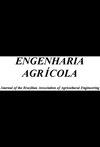COFFEE DRYER WITH DEHYDRATED AIR: A TECHNICAL AND ECONOMIC VIABILITY ANALYSIS
IF 0.9
4区 农林科学
Q3 AGRICULTURAL ENGINEERING
引用次数: 1
Abstract
The defects that drying in concrete yards impose on coffee beans and the search for gourmet coffee production have prompted the emergence of new drying technologies. This work verified the technical and economic feasibility of drying coffee with dehumidified air with a refrigerating capacity of 422,908.7 J s -1 , compatible with static capacity dryers equal to 75 m 3 . Considering the sale price of coffee, the cost of electric energy acquisition, the monthly interest rate and maintenance time, expenses that are equivalent to the depreciation of the concrete yard, a central compound rotational design was considered with 28 tests for the feasibility analysis, including the internal rate of return, net present value and the return on investment. The results showed that in the electric drying units, the dried coffee presents fewer broken and defective beans and has higher retention in a N o . 17 sieve. With a higher beverage quality and a price 12.11% higher, drying with dehydrated air showed a PBD of 2.27 years and a return of US$ 2.49 million. The optimisation results were 98.98% desirable. It was concluded that it is economically feasible to dry coffee with dehydrated air and without using a concrete yard.咖啡干燥机与脱水空气:技术和经济可行性分析
在混凝土场中干燥对咖啡豆造成的缺陷和对美味咖啡生产的追求促使了新的干燥技术的出现。本工作验证了用除湿空气干燥咖啡的技术经济可行性,其制冷量为422,908.7 J s -1,与75 m3的静态容量干燥机兼容。考虑到咖啡的销售价格、获取电能的成本、每月利率和维修时间,以及相当于混凝土场折旧的费用,考虑了一种中央复合旋转设计,并进行了28项测试,以进行可行性分析,包括内部回报率、净现值和投资回报率。结果表明,在电干燥装置中,干燥后的咖啡出现较少的破碎和缺陷豆,并且在N o中的保留率较高。17筛。在提高饮料质量和提高价格12.11%的情况下,脱水空气干燥的PBD为2.27年,回报为249万美元。优化结果为98.98%。结果表明,在不使用混凝土堆场的情况下,用脱水空气干燥咖啡是经济可行的。
本文章由计算机程序翻译,如有差异,请以英文原文为准。
求助全文
约1分钟内获得全文
求助全文
来源期刊

Engenharia Agricola
AGRICULTURAL ENGINEERING-
CiteScore
1.90
自引率
20.00%
发文量
62
审稿时长
4-8 weeks
期刊介绍:
A revista Engenharia Agrícola existe desde 1972 como o principal veículo editorial de caráter técnico-científico da SBEA - Associação Brasileira de Engenharia Agrícola.
Publicar artigos científicos, artigos técnicos e revisões bibliográficas inéditos, fomentando a divulgação do conhecimento prático e científico na área de Engenharia Agrícola.
 求助内容:
求助内容: 应助结果提醒方式:
应助结果提醒方式:


